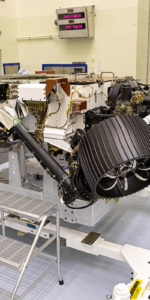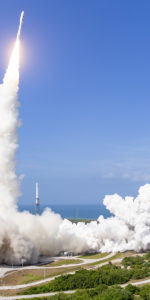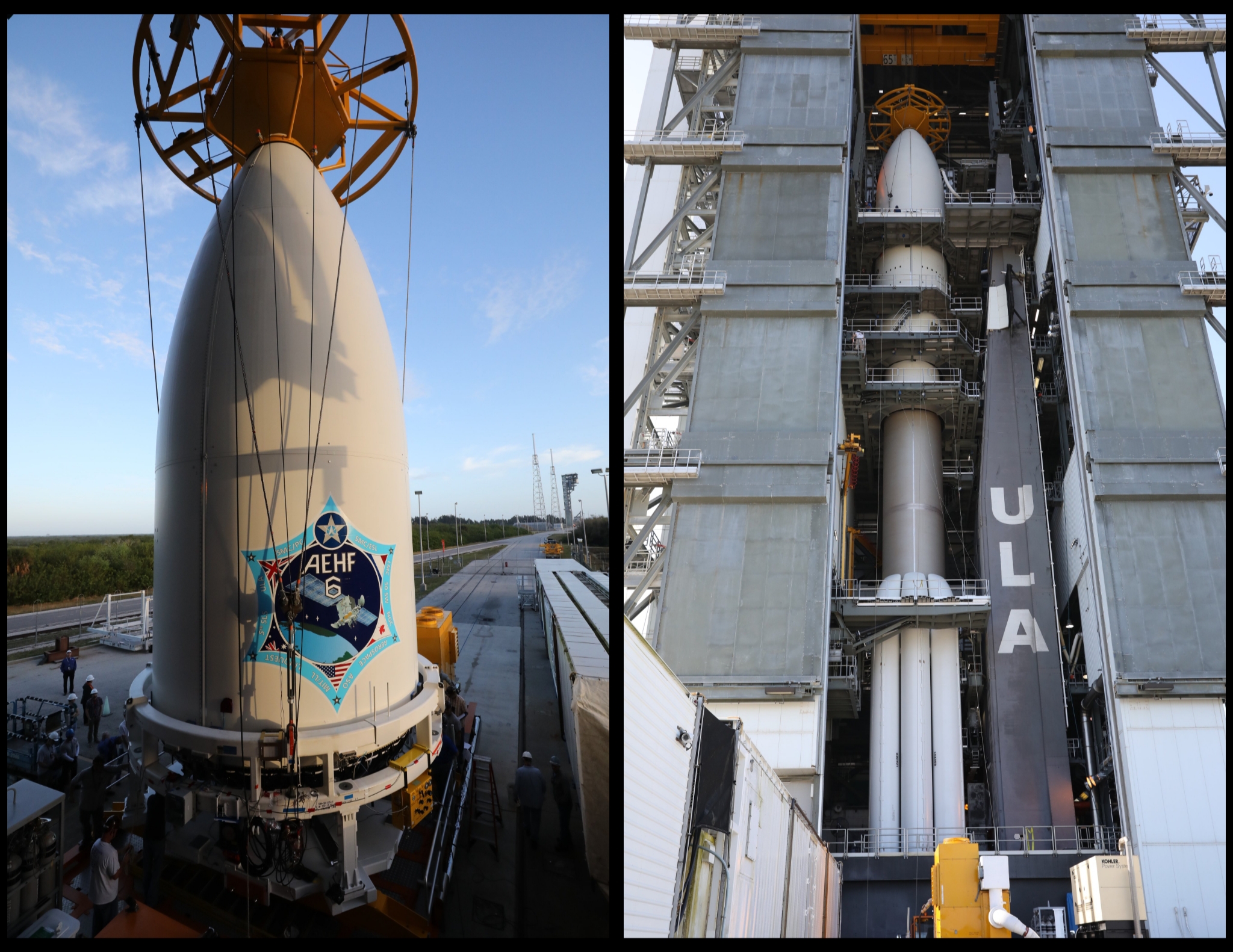
For only the second time this year, the roar of an Atlas V will break the early afternoon stillness of Cape Canaveral on Thursday, when United Launch Alliance (ULA) aims to deliver its first major payload to orbit on behalf of the newly-inaugurated U.S. Space Force. Liftoff of AEHF-6—the sixth and final member in a fleet of Advanced Extremely High Frequency communications satellites, to afford America’s civilian leaders fast and secure links with worldwide military assets—is scheduled to take place from Space Launch Complex (SLC)-41 at 2:57 p.m. EDT.
Coming a little over six weeks since the successful launch of Solar Orbiter, this mission marks the 11th use of the Atlas V in its most powerful configuration, the 551, as well as the 500th use of an RL-10 upper-stage engine.
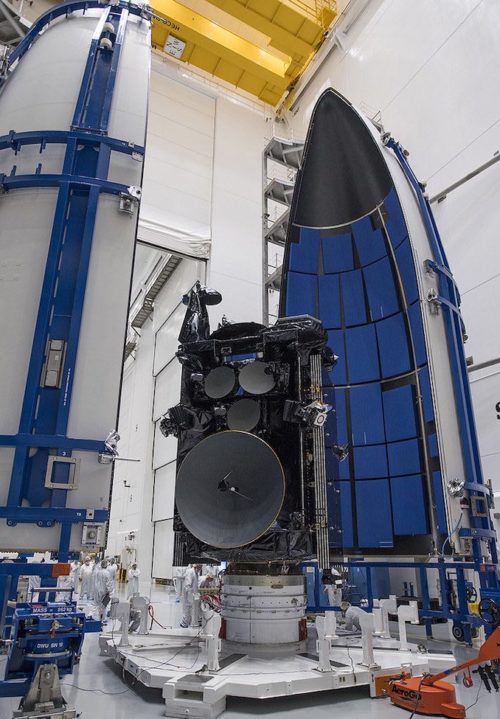
FOLLOW our AEHF-6 Mission Coverage HERE
In terms of the frequency of launches, two flights in three months has rendered the first quarter of this year a relatively quiet period for ULA, although behind the scenes a significant amount of work continues to ramp up for a busy 2020 manifest. AmericaSpace previously noted that 30 booster cores are currently in work at the organization’s Decatur, Ala., facility, to support upcoming missions, with an expectation that ULA will execute nine flights this year. If it pulls off that amount, 2020 promises to be its heaviest year of launches since 2016. Following the retirement of the Delta II in 2018 and the final flights of the “single-stick” Delta IV Medium last year, only the mammoth Delta IV Heavy remains on ULA’s books for the foreseeable future. It is expected to fly twice in 2020, lofting the classified NROL-44 and NROL-82 payloads—the former from the Cape’s SLC-37B in June, the latter from SLC-6 at Vandenberg Air Force Base, Calif., in the fall—for the National Reconnaissance Office.
The Atlas V fleet, meanwhile, having already supported Solar Orbiter and Thursday’s anticipated launch of AEHF-6, will stage as many as five more missions. Two will be mixed payloads dedicated to the U.S. Space Force, yet still saddled with their old Air Force Space Command mission designators of AFSPC-7 and AFSPC-8, the top-secret NROL-101 for the National Reconnaissance Office, NASA’s Perseverence rover bound for Mars in July and potentially the first crewed flight of the CST-100 Starliner at the end of August with NASA astronauts Mike Fincke and Nicole Mann and Boeing test pilot and former shuttle commander Chris Ferguson.
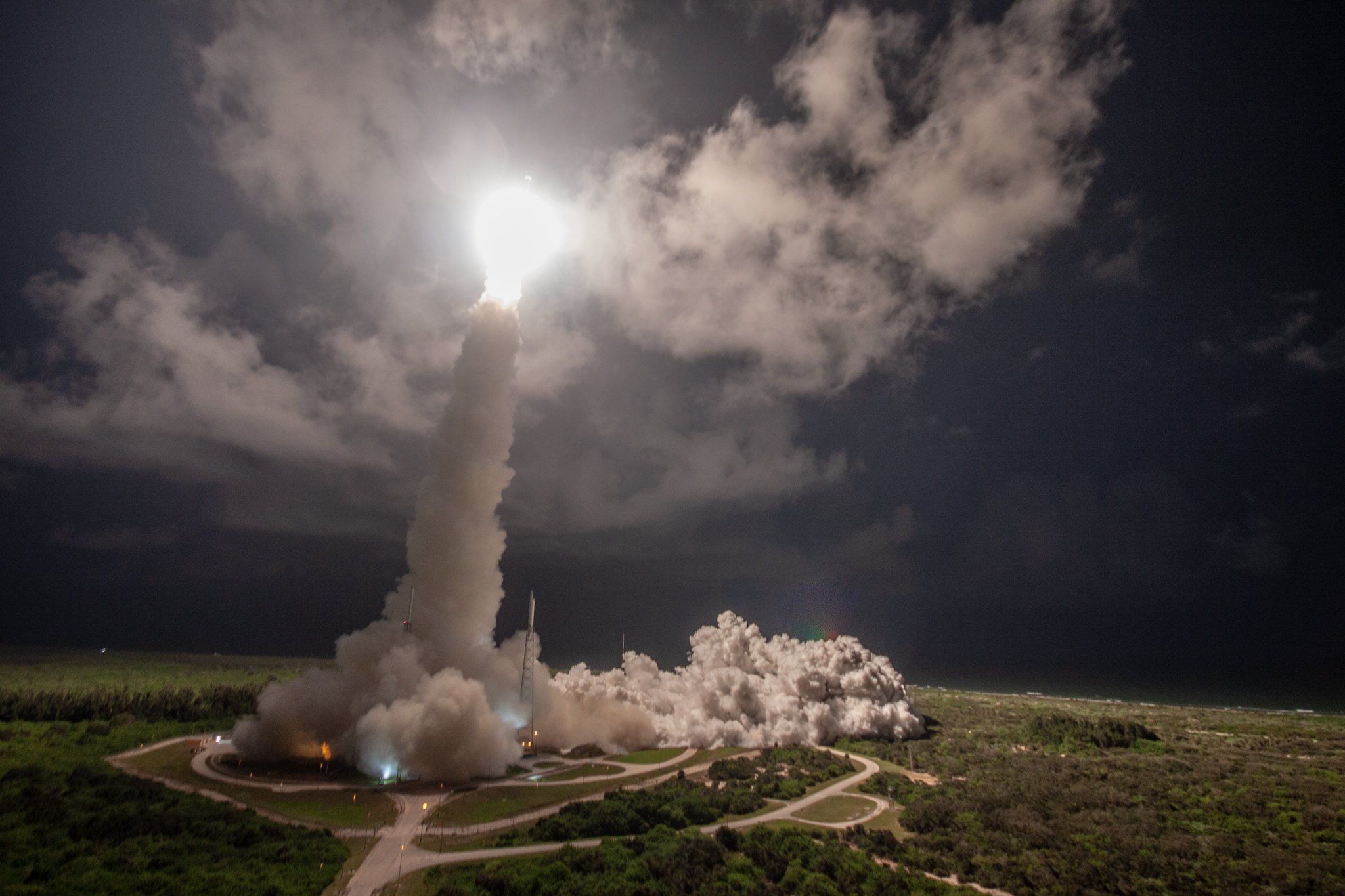
In readiness for the AEHF-6 launch campaign, the Atlas V Common Core Booster (CCB) and Centaur upper stage left Decatur on 4 January, aboard ULA’s newly-renamed R/S RocketShip vessel, and arrived at Cape Canaveral on the 11th. The booster was immediately transferred to the holding bay at the Atlas Spacecraft Operations Center (ASOC) for receiving checks and horizontal processing, whilst the Centaur—which will be powered by the 500th RL-10 engine—was moved directly to the Vertical Integration Facility (VIF) at SLC-41 to begin the lengthy process of installation of its inter-stage adapter, payload fairing base segments and support ring. Processing entered high gear last month, when the 107-foot-long (32.6-meter) booster arrived at the VIF on 19 February for the Launch Vehicle On Stand (LVOS) milestone. “The name is a blend of phrases from our heritage,” ULA explained. “The Atlas program called this event Booster On Stand (BOS), while the Delta program used Vehicle On Stand (VOS). Now it is simply LVOS.”
The process required the booster to be hauled horizontally by semi-truck across a distance of four miles (6.4 km) from the ASOC to the VIF. It was then parked at the doorway of the 30-story facility, as ULA engineers set up ground handling equipment and a pair of cranes grappled and raised the CCB from its carrier and secured its aft section in a rail dolly. This allowed the booster to be elevated to a vertical configuration. “Once vertical, the aft structure was disengaged and the crane holding the forward end of the rocket slowly and carefully hoisted the stage into the VIF and positioned it aboard the MLP,” ULA noted.
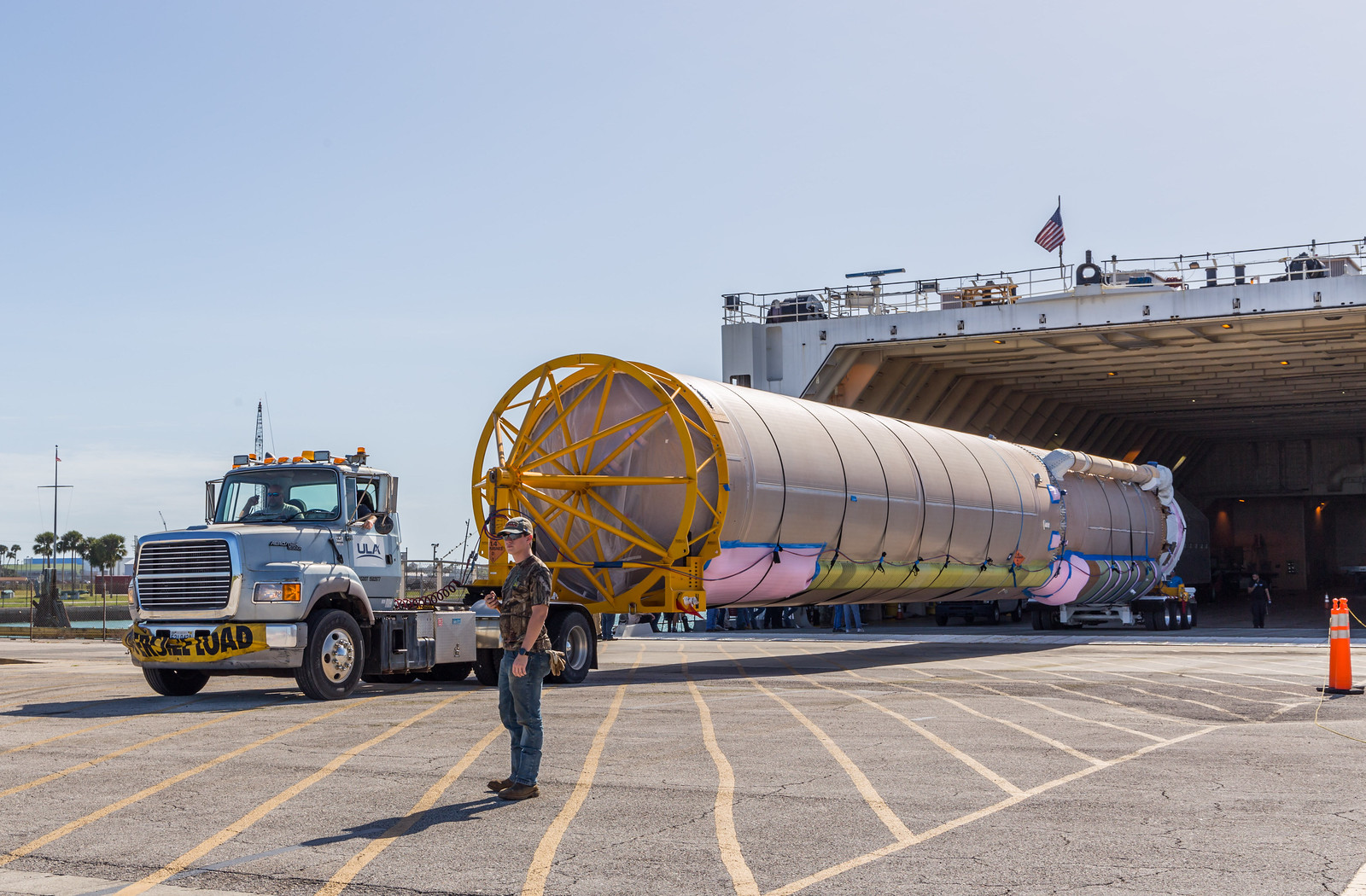
The five solid-fueled rocket boosters (SRBs)—which will generate three-quarters of the 551’s total thrust at liftoff, some 1.7 million pounds (790,000 kg)—were then mounted around the base of the booster. “All 5 SRBs hung,” tweeted ULA CEO Tory Bruno on 28 February, by which point the 41.5-foot-tall (12.6-meter) Centaur upper stage had also been added to the stack.
Next came the AEHF-6 payload itself, which represents the sixth member in a fleet of military communications satellites to connect civilian leaders with their warfighters all around the world. When operational, this 13,600-pound (6,170 kg) satellite will take its place as the capstone of a “constellation” built by Lockheed Martin at its facility in Sunnyvale, Calif., with a “protected communications payload” provided by Northrop Grumman Corp. of Bethpage, N.Y. The network is intended to replace the outdated Milstar communications satellites and—as the name implies—it operates at extremely high frequencies (44 GHz uplink) and super-high frequencies (20 GHz downlink), with the capacity to relay communications directly without passing through ground stations. The AEHF phased-array antennas also aid with the elimination of potential radio-jamming and each satellite can support data rates as high as 8.192 Mbits/sec.
The system incorporates advanced encryption, low probability of intercept and detection and an ability to penetrate the electromagnetic interference caused by nuclear weapons to route communications, real-time video, maps and targeting data to users on land, sea or in the air. The AEHF constellation provides complete surface coverage from 65 degrees North to 65 degrees South latitude. Five years ago, Lockheed Martin demonstrated that the fixed-price structure and incorporate economies of scale had led the costs for AEHF-5 and AEHF-6 to be reduced more than 35 percent below initial government estimates. And in April 2017, it was announced that one of AEHF-6’s remote interface units—an aluminum electronics enclosure housing avionics circuits—would mark the first 3D-printed certified part ever used aboard a Lockheed Martin-built military spacecraft. The specific part was fabricated with the Laser Powder Bed Fusion additive manufacturing methodology, in which a laser melts and fuses aluminum metal powder in a layer-by-layer process to build it from a digital design. “The lead time for manufacturing the part went from six months to only 1.5 months,” it was noted, “with assembly time also being reduced from 12 hours to just three hours.”
Unsurprisingly, very little other detail of the build process has been forthcoming, other than a clipped reference in August of last year that AEHF-6 was “in full production in Silicon Valley”. The satellite was delivered aboard a C-5 Galaxy cargo aircraft from Sunnyvale to the Cape’s Shuttle Landing Facility (SLF) on 11 January 2020, courtesy of the 60th Air Mobility Wing (AMW) from Travis Air Force Base, near Fairfield, Calif. It was moved to Astrotech’s payload processing facility in Titusville for checkout, fueling and encapsulation in its 17-foot-wide (5-meter) Short Payload Fairing (SPF). On 12 March, the payload was installed atop the rocket, topping-off the stack at a total height of 197 feet (60 meters).
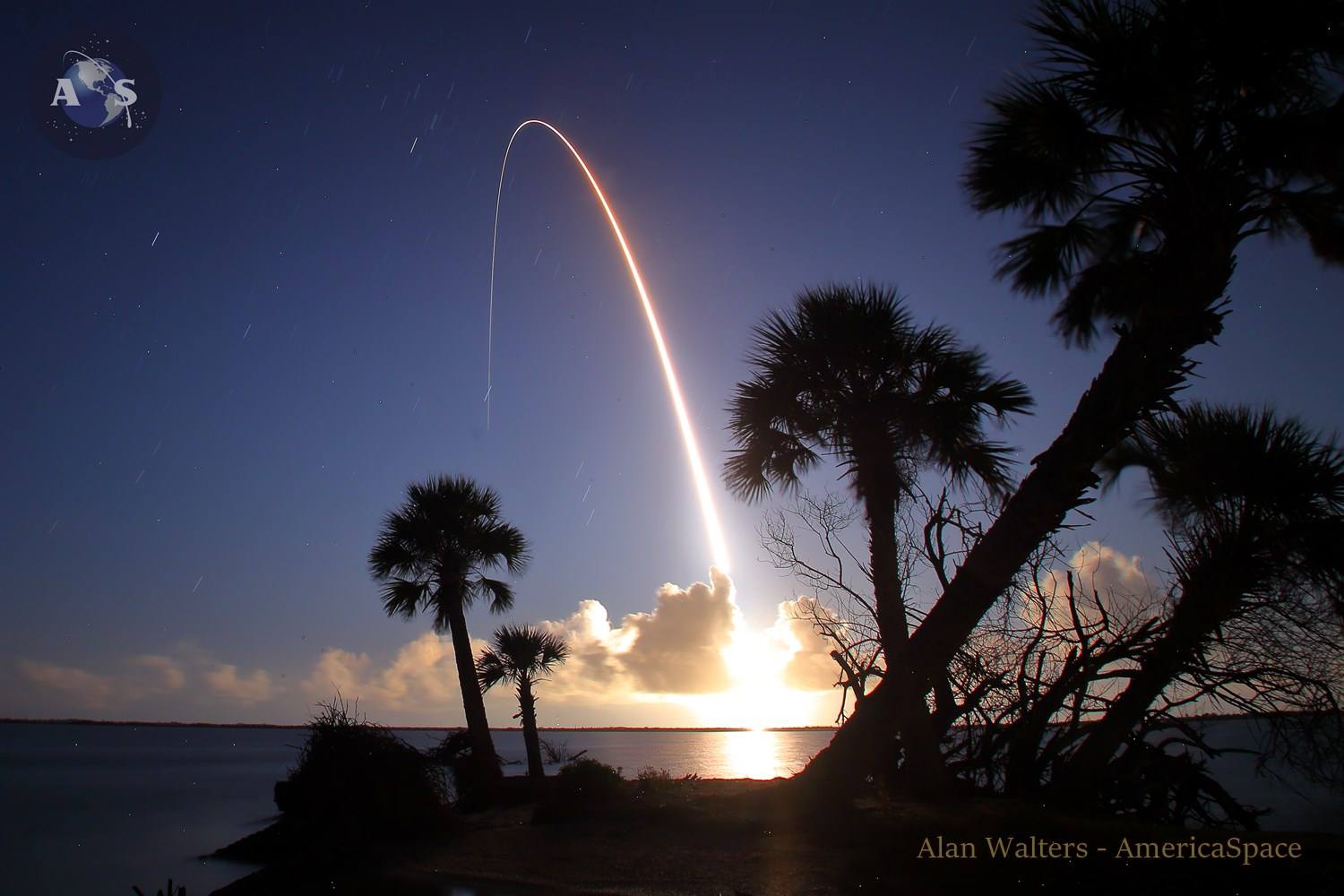
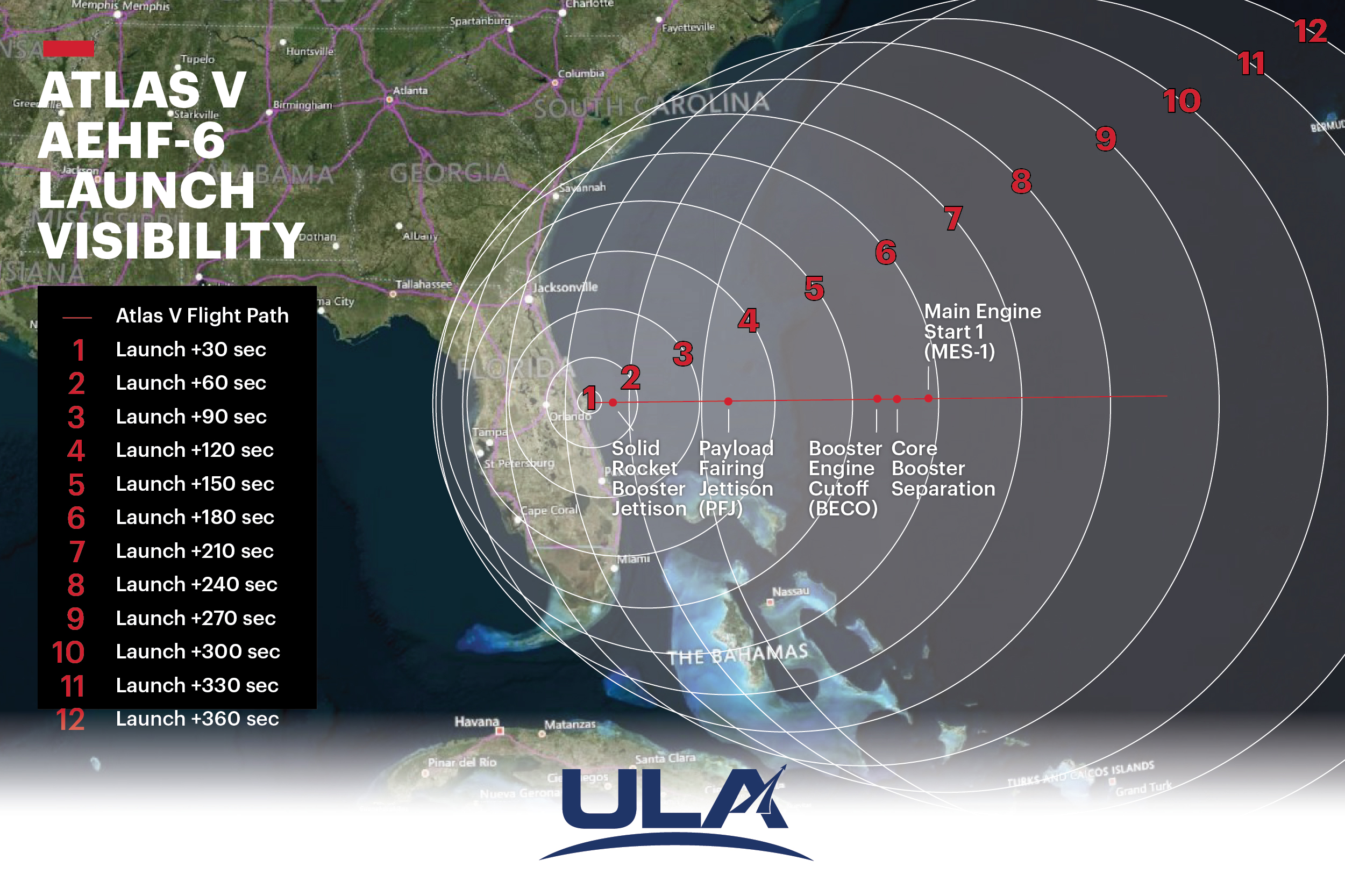
The Atlas V has flown 82 missions since August 2002, of which ten have previously utilized the 551, which is the booster’s most powerful configuration, capable of hauling up to 19,620 pounds (8,900 kg) to geostationary altitude. It was first employed to deliver NASA’s New Horizons mission to Pluto in January 2006 and the agency’s Juno spacecraft to Jupiter in August 2011, before boosting five heavyweight Mobile User Objective System (MUOS) military communications satellites between February 2012 and June 2016, the dedicated AFSPC-11 payload for Air Force Space Command in April 2018 and most recently the AEHF-4 and AEHF-5 birds in October 2018 and last August. In fact, the Atlas V—in its 531 configuration, with three solid-fueled boosters—also lofted the AEHF-1, AEHF-2 and AEHF-3 satellites between August 2010 and September 2013.
Flying piggyback aboard AEHF-6 on Thursday will be the TDO-2 cubesat, a so-called “multi-manifest small satellite” laden with several U.S. Government payloads for optical calibration and space domain awareness experiments. “The mission of TDO-2 is to support space domain awareness through optical calibration and satellite laser ranging,” noted the Space and Missile Systems Center (SMC) at Los Angeles Air Force Base in El Segundo, Calif. “This capability will assist the nation’s warfighters in performing their critical missions.” Built by Georgia Institute of Technology and sponsored by the Air Force Research Laboratory, TDO-2 will be deployed from its perch at the aft-facing end of the Centaur upper stage about 31 minutes after Thursday’s launch.
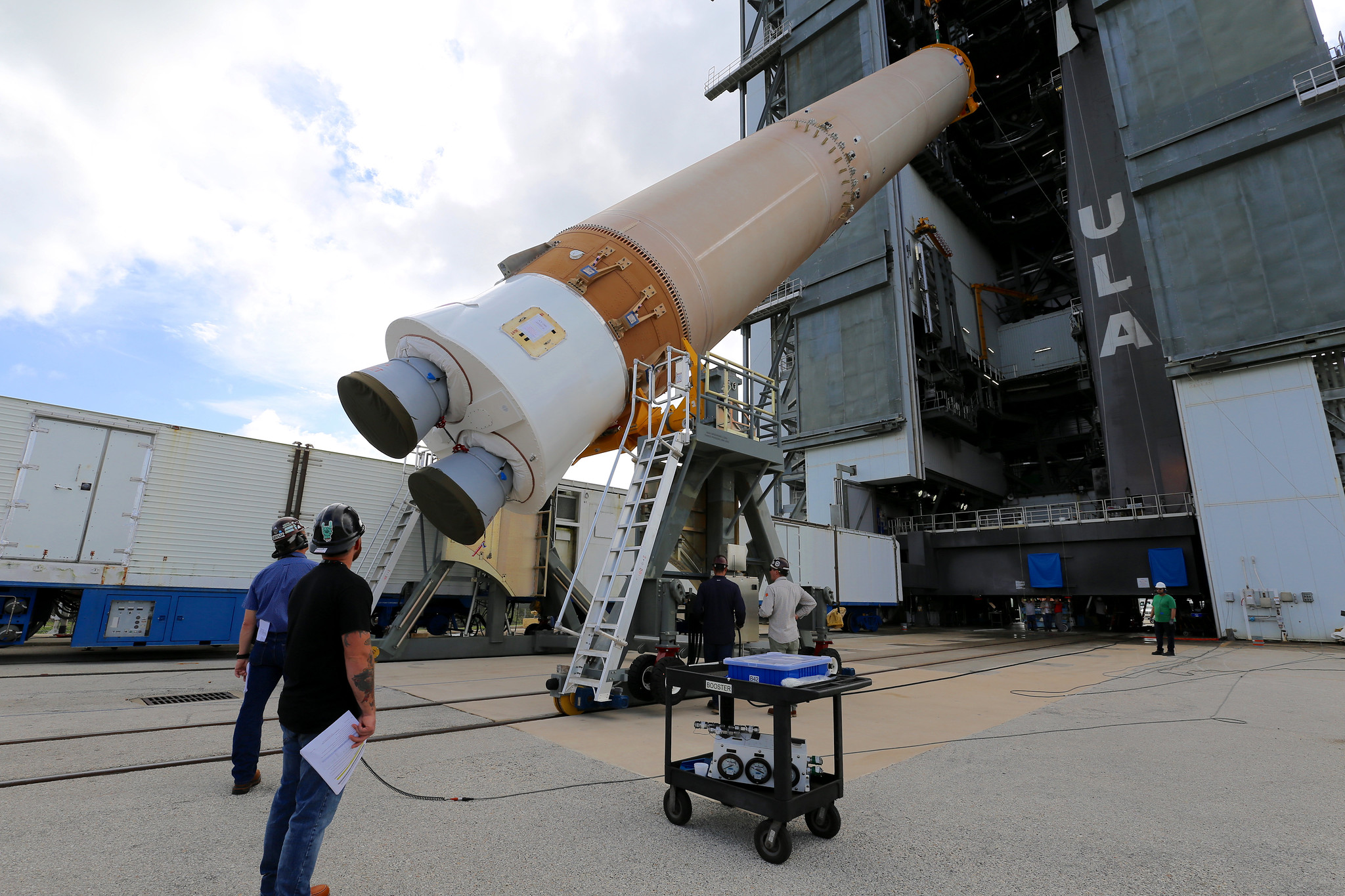
And that launch has slipped a couple of times in recent weeks. Originally scheduled to fly on 19 March, it was announced by ULA earlier this month that a delay of at least two days would be needed to swap out a troublesome valve which had exhibited an off-nominal reading. Additional time required to complete testing of the replacement valve led ULA and the Eastern Range to settle on 26 March as the next available launch date. “Previously misbehaving valve has been changed out and normal vehicle testing continues,” Mr. Bruno tweeted last week. “Launch Team is in place through liftoff on the 26th.”
Current forecasts predict an 80-percent chance of good weather for both Thursday’s primary launch attempt and a backup on Saturday. “High pressure will remain in place over the Florida panhandle through the week, leading to unusually warm and mainly dry conditions,” reported the 45th Weather Squadron at Patrick Air Force Base in its Monday morning update. “Favorable conditions are expected for launch and backup day, as the upper-level ridge and its associated high pressure strengthen over the state. Light offshore flow is expected both mornings before winds turn onshore in the afternoon behind the sea breeze. While it is expected to remain dry, scattered clouds will develop due to daytime heating.” These clouds might violate Launch Commit Criteria (LCC) by potentially infringing the Cumulus Cloud Rule on both days.
And alongside the weather, the steady worldwide march of the COVID-19 coronavirus has so far not seriously hampered the state of readiness for Thursday’s launch.
.
.
FOLLOW AmericaSpace on Facebook and Twitter!
.
.




